Zoning Should Not Be Used To Force Washington Ave To Become A Retail Street
There are some who envision one mile of our Washington Ave (from 4th to 18th) as being a retail street like the Delmar Loop or Chicago’s Magnificent Mile along Michigan Ave. One person even wants to use a proposed form-based code overlay to mandate a retail use on the ground floor. Yes, the idea of using a form-based code to regulate uses is illogical. The whole point of moving from use-based zoning to form-based zoning is to get the form correct.
Recognizing uses change more often than the physical form of buildings.
It was a December announcement that prompted this push for a retail street:
LockerDome, which currently has 45 employees, moved to a 6,800-square-foot storefront on Washington Avenue in 2012 but has outgrown that space, said its chief executive and co-founder Gabe Lozano.
After a 120-day build-out set to begin in the second half of 2016, LockerDome’s employees will move to occupy an 18,000-square-foot building a block away at 1314 Washington. (Post-Dispatch)
LockerDome is a St. Louis-based tech company.
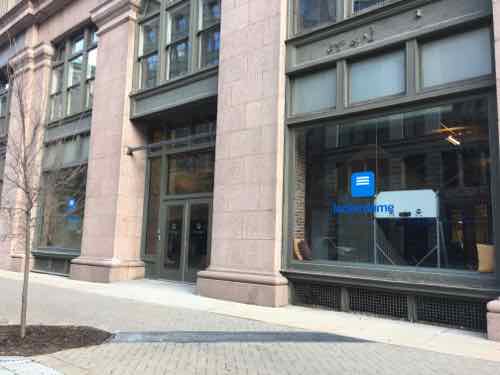
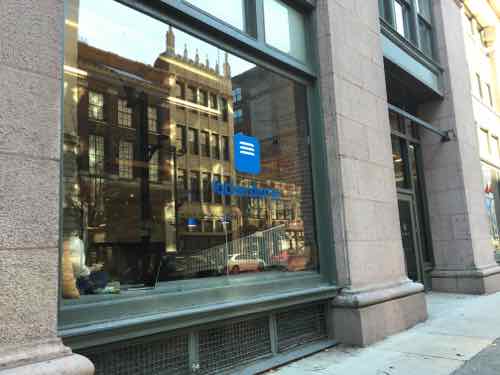
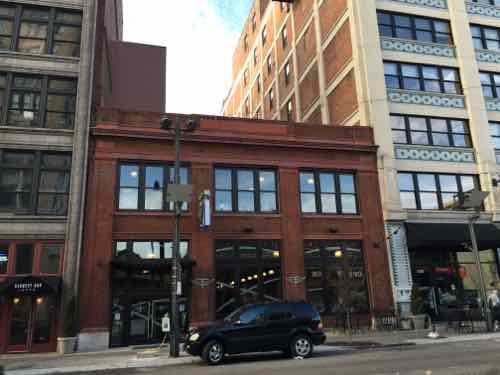
Both have the form right, both have windows we can see into day & night. Some think a gym is an acceptable use on a retail street — but a high-tech firm is not. I personally don’t care what’s going on behind the facade. I can see into the windows when I pass by.
But one person would prevent LockreDome from occupying the ground floor of this building — he doesn’t want offices on ground floors. Yet, firms want to be located on Washington Ave. because it is the most vibrant part of Downtown/Downtown West. With the upper floors converted into residential there are too few options for large offices. For that matter, there are too few spaces for a larger retailer like a CVS/Walgreen’s.
What makes a credit union/bank lobby ok, but not a creative office?
It’s the non-creative offices that are the buzz kill…
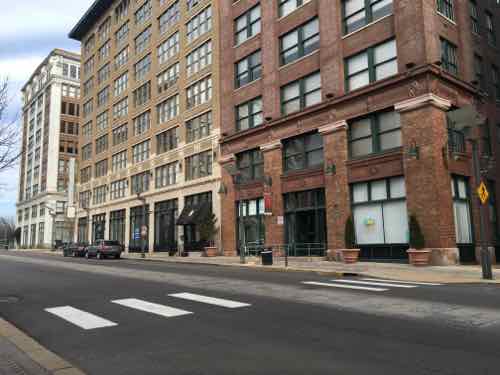
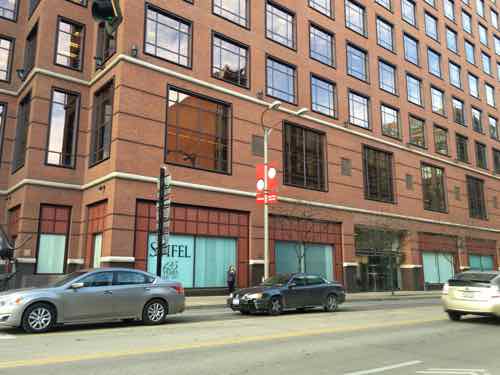
Regulating uses is arbitrary — which is why I want the city of St. Louis to abandon old-fashioned Euclidean use-based zoning and adopt form-based zoning. Form-based zoning, however, can be used to regulate the form – largely windows & doors at the ground level where pedestrian activity it to be encouraged.
Many ground floor offices downtown keep their blinds closed 24/7 — that’s something a form-based code could/should address. We need uncovered windows where we can see activity going on inside. But could Washington Ave become a retail street like the Delmar Loop or Magnificent Mile?
No — both of those were built for retail purposes.
This mile of Washington Ave has had many uses over the decades — the middle part included sweatshops where immigrants manufactured clothing, shoes, hats, etc. Items sold in stores all over the country, possibly in the Sears catalog. It wasn’t a retail street then.
Today Washington Ave is largely a restaurant street, with the occasional niche retail merchant. Besides bars/restaurants the other common “retail” use is hair salons.
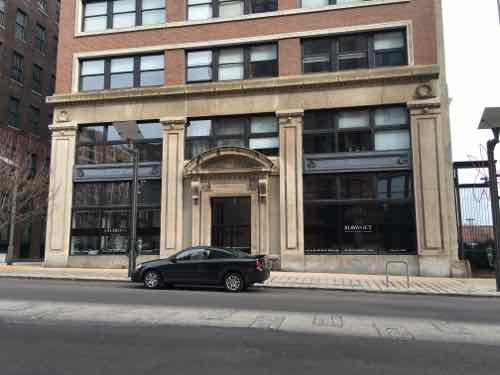
Another problem are the many gaps in continuity.
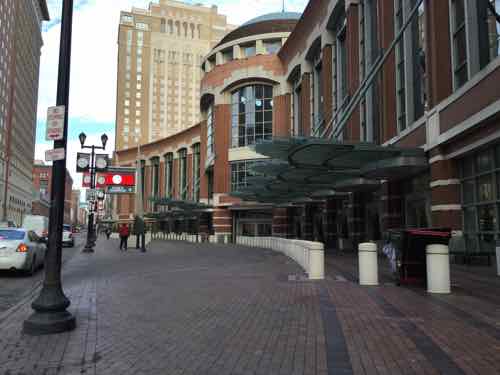
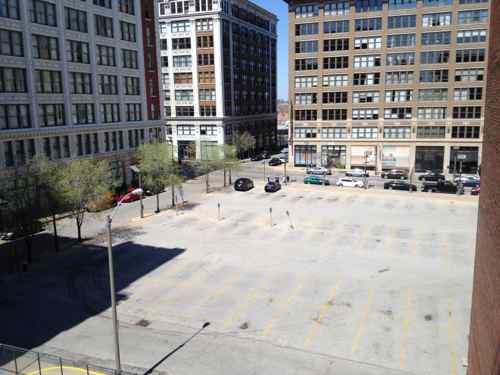
Get the form right — including being able to look into ground floor spaces. Don’t fret about the users.
— Steve Patterson
I’ve never even considered this discussion before today’s post. But I wonder if the underlying reason for the proposed mandate is actually to discourage ‘makeshift’ residential occupancy from popping up in some of the undeveloped/underdeveloped buildings along Washington Avenue? I recall what happened in South Bend’s downtown area when I was enrolled there in college almost a decade and a half ago. Worn bed sheets were hung from storefront window heads in depressed retail areas; residents lived like squatters behind the sheets, cooking on hotplates, sleeping on bare mattresses, etc………not that I think it would exist to this extreme in downtown St Louis, but with NLEC’s possible reduction in services, the downtown area might see an attempt to accommodate some new residents who belong to a lower socio-economic class. By introducing the legislation before it happens, it’s possible backers won’t be accused of callously pushing the poor out of downtown St Louis.
It’s been well over a decade since such makeshift occupancy existed on Washington Ave.
Who is the person who wants to mandate ground-floor retail and what are his chances of success?
While I appreciate your fascination with form-based zoning, I do care what’s happening inside the windows, at street level, or, more precisely, what isn’t happening. Windows do NOT guarantee activity, all they guarantee is glass. And as economies ebb and flow, many times the windows morph from interesting to drab, or worse, covered on the inside, the outside, or both.
Unfortunately, zoning, in any form, has little power to force “good” uses to happen, all it can really do is to limit the impacts of “bad” uses (and both good and bad are, to a certain degree, subjective). And while I agree that “We need uncovered windows where we can see activity going on inside”, making that a reality is going to take a major government intrusion, as in zoning inspectors citing property owners for obscured windows – good luck with that!
Is Fitness Factory moving or calling it quits?
Reports I’ve seen indicate it’ll “move elsewhere downtown”.
The rumor months ago was it would move to the Jefferson Atms, which didn’t seem feasible until today: http://www.stltoday.com/business/columns/building-blocks/jefferson-arms-renovation-possible/article_634a0136-11e3-5fdb-a0a8-fb7a5de0f16b.html
Thanks for the info, Steve. I certainly hope the JA project works out and becomes their new home. I would hate to see another DT business close its doors.
If buildings that otherwise wouldn’t have your “traditional” storefront commercial appearance/purpose are forced to develop it specifically for that purpose, there’s a strong chance they either a) won’t find tenants or b) won’t find the kinds of responsible, long-term tenants needed to strengthen the street. So there’s the potential of taking away otherwise usable space and creating forced-inflation of downtown’s vacancy ratio.
Same goes with many neighborhood residential developments where street-level retail just won’t work, but it gets mandated, and an otherwise positive development has a negative impact due to commercial vacancy.
Just spitballin’ 🙂